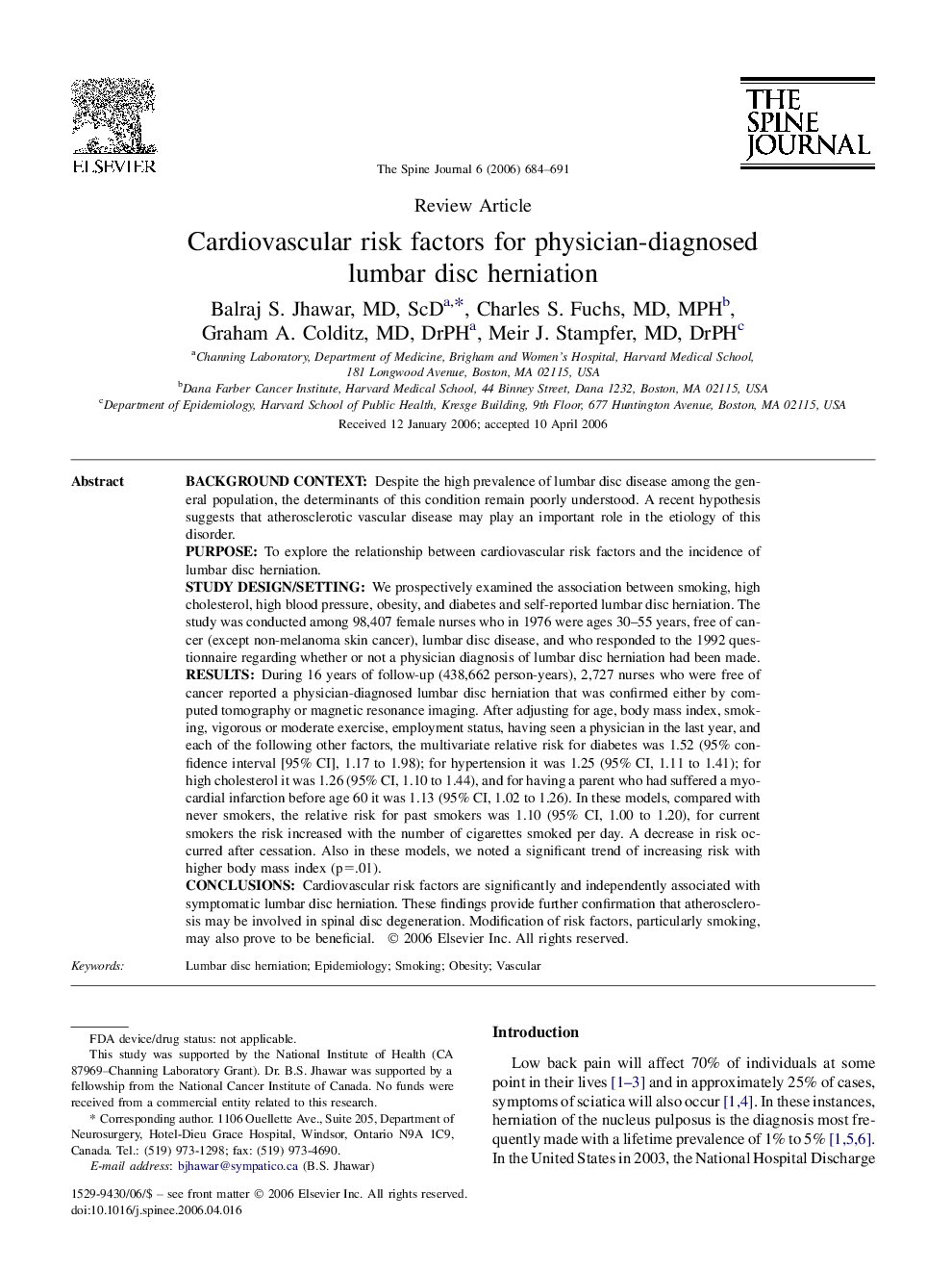| کد مقاله | کد نشریه | سال انتشار | مقاله انگلیسی | نسخه تمام متن |
|---|---|---|---|---|
| 4100125 | 1268671 | 2006 | 8 صفحه PDF | دانلود رایگان |

Background contextDespite the high prevalence of lumbar disc disease among the general population, the determinants of this condition remain poorly understood. A recent hypothesis suggests that atherosclerotic vascular disease may play an important role in the etiology of this disorder.PurposeTo explore the relationship between cardiovascular risk factors and the incidence of lumbar disc herniation.Study design/settingWe prospectively examined the association between smoking, high cholesterol, high blood pressure, obesity, and diabetes and self-reported lumbar disc herniation. The study was conducted among 98,407 female nurses who in 1976 were ages 30–55 years, free of cancer (except non-melanoma skin cancer), lumbar disc disease, and who responded to the 1992 questionnaire regarding whether or not a physician diagnosis of lumbar disc herniation had been made.ResultsDuring 16 years of follow-up (438,662 person-years), 2,727 nurses who were free of cancer reported a physician-diagnosed lumbar disc herniation that was confirmed either by computed tomography or magnetic resonance imaging. After adjusting for age, body mass index, smoking, vigorous or moderate exercise, employment status, having seen a physician in the last year, and each of the following other factors, the multivariate relative risk for diabetes was 1.52 (95% confidence interval [95% CI], 1.17 to 1.98); for hypertension it was 1.25 (95% CI, 1.11 to 1.41); for high cholesterol it was 1.26 (95% CI, 1.10 to 1.44), and for having a parent who had suffered a myocardial infarction before age 60 it was 1.13 (95% CI, 1.02 to 1.26). In these models, compared with never smokers, the relative risk for past smokers was 1.10 (95% CI, 1.00 to 1.20), for current smokers the risk increased with the number of cigarettes smoked per day. A decrease in risk occurred after cessation. Also in these models, we noted a significant trend of increasing risk with higher body mass index (p=.01).ConclusionsCardiovascular risk factors are significantly and independently associated with symptomatic lumbar disc herniation. These findings provide further confirmation that atherosclerosis may be involved in spinal disc degeneration. Modification of risk factors, particularly smoking, may also prove to be beneficial.
Journal: The Spine Journal - Volume 6, Issue 6, November–December 2006, Pages 684–691